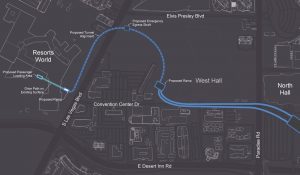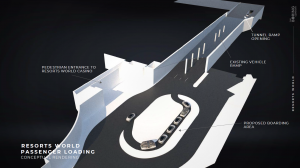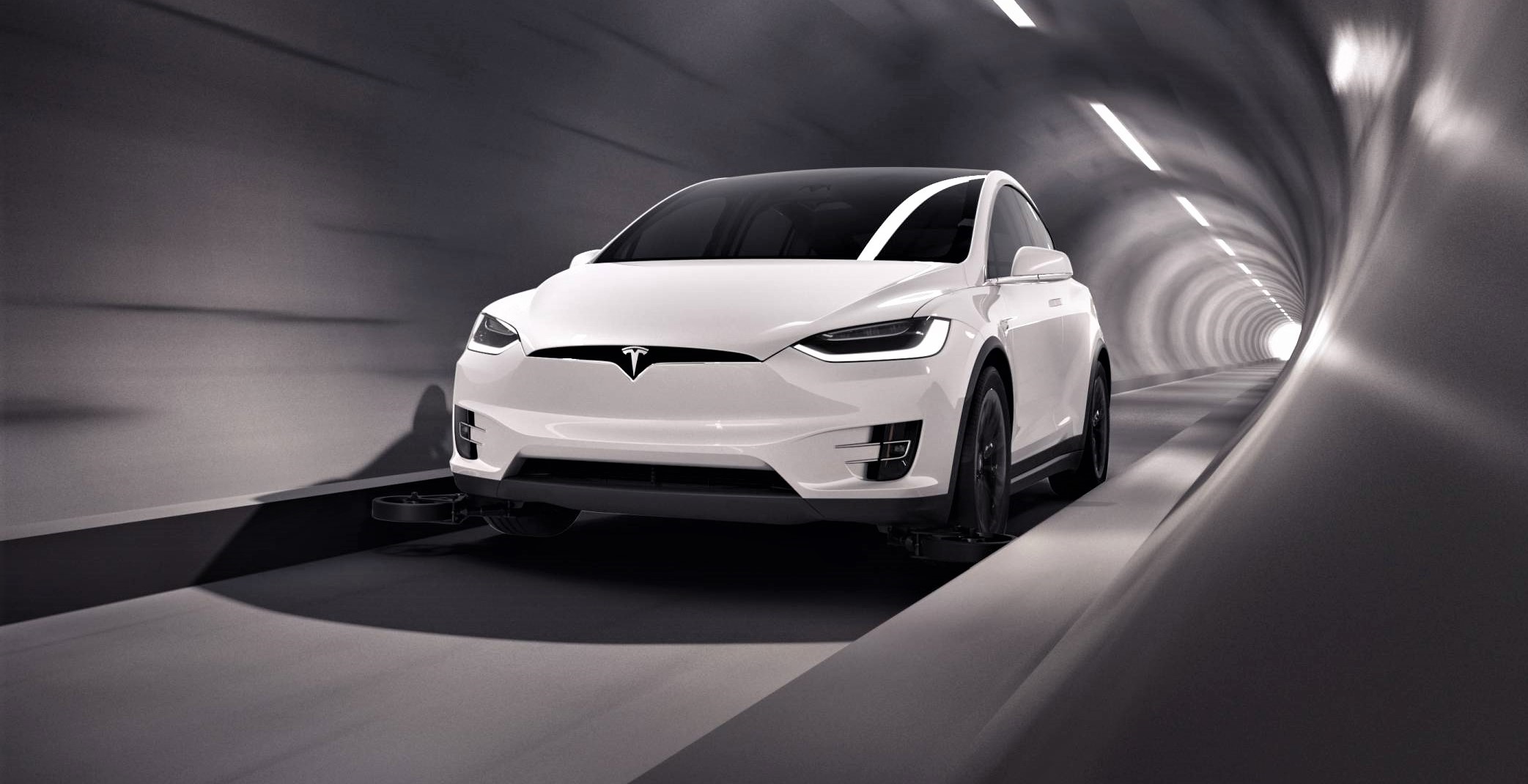
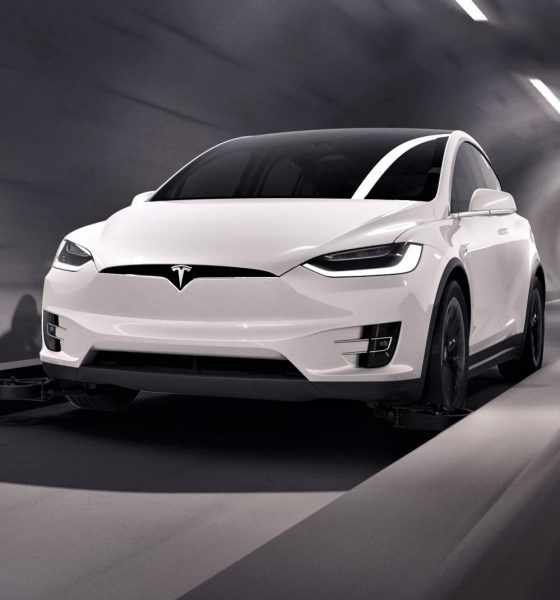
News
Elon Musk’s Boring Co. Las Vegas Loop gets approved expansion to new Strip location
The Boring Company, Elon Musk’s tunneling venture, is expanding its Las Vegas Convention Center (LVCC) transportation Loop to include a station stop at the city’s new Resorts World hotel. The local county approved the application on Wednesday, checking off the final step needed to move forward with the project.
The people-moving “Loop” comprises two tunnels underneath the LVCC and ferries visitors autonomously from one end to the other in an all-electric Tesla Model S, X, or 3. The Wynn Las Vegas and the Resorts World Las Vegas applied early on in the Boring Company construction process to be included in the Loop. “The connector is an important step for Wynn as the resort continues its investments in the future of eco-friendly meetings and conventions in Las Vegas,” Wynn officials claimed in a prior statement.
With the Resorts World approval, it looks as though the Boring Company’s larger proposal for a transportation system in Sin City is in sight.
- The Resorts World Las Vegas announces plan approval for a Boring Company Loop Station under the Las Vegas Convention Center. (Image: Resorts World)
- The Resorts World Las Vegas announces plan approval for a Boring Company Loop Station under the Las Vegas Convention Center. (Image: Resorts World)
“We are thrilled to receive approval from the County Commission to move forward with our proposed passenger station and tunnel and are eager to take the next steps in creating an innovative transportation solution for our convention guests and visitors,” Resorts World Las Vegas president Scott Sibella said in today’s press release.
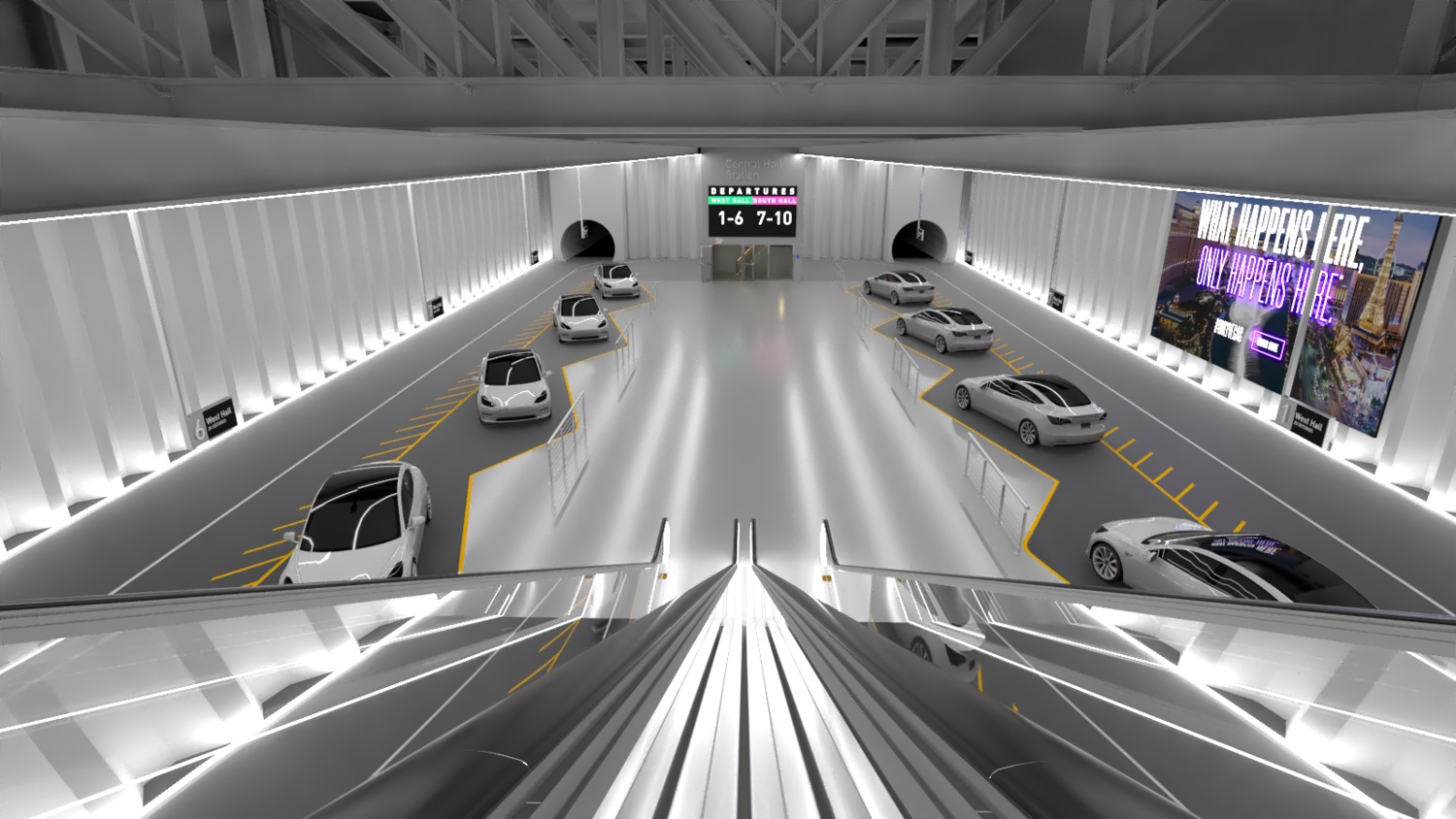
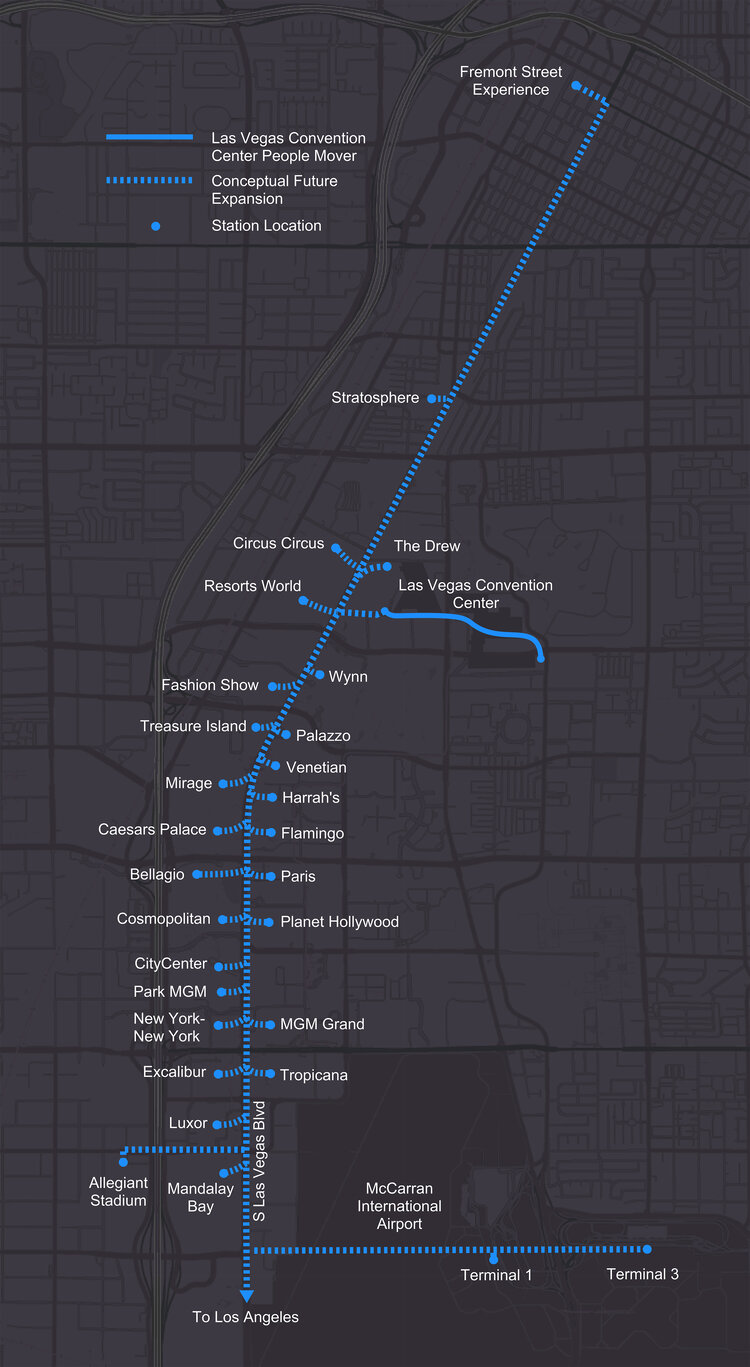
Sibella previously stated the possibility for a partnership with The Boring Company is exciting because his resort destination is designed to be “at the forefront of progressive technology,” much like the Musk-led company’s mission to increase traveling efficiency. Resorts World itself is still under construction – it’s scheduled to be opened in Summer 2021.
Originally, the Boring Company hoped to have the Center’s tunnels in full operation for the 2021 Consumer Electronics Show in January; however, that event has been moved online due to the Coronavirus pandemic. Initial Loop tunnel construction was completed in May this year, and Boring is expected to continue with its building timeline even without the specific deadline overhead. The system is designed to ferry passengers to any of the in-town destinations within two minutes. The Boring Company is also aiming to connect its LVCC loop to the first and third terminals of nearby McCarran International Airport as well as downtown Las Vegas.
While both the Wynn and Resorts World buildings are located at the north end of the Vegas Strip, McCarran Airport, and other popular Vegas destinations, such as the Mandalay Bay Hotel, The Luxor, and the MGM Grand are located at the Strip’s southern portion. Notably, that portion of the company’s Loop expansion plans also notes a future tunneling direction towards Los Angeles. Boring machine activity was recently spotted between the two cities in Adelanto, California, indicating that perhaps Resorts’ recent approval vote is a harbinger of many more to come.

Elon Musk
Elon Musk and Tesla AI Director share insights after empty driver seat Robotaxi rides
The executives’ unoccupied tests hint at the rapid progress of Tesla’s unsupervised Robotaxi efforts.

Tesla CEO Elon Musk and AI Director Ashok Elluswamy celebrated Christmas Eve by sharing personal experiences with Robotaxi vehicles that had no safety monitor or occupant in the driver’s seat. Musk described the system’s “perfect driving” around Austin, while Elluswamy posted video from the back seat, calling it “an amazing experience.”
The executives’ unoccupied tests hint at the rapid progress of Tesla’s unsupervised Robotaxi efforts.
Elon and Ashok’s firsthand Robotaxi insights
Prior to Musk and the Tesla AI Director’s posts, sightings of unmanned Teslas navigating public roads were widely shared on social media. One such vehicle was spotted in Austin, Texas, which Elon Musk acknowleged by stating that “Testing is underway with no occupants in the car.”
Based on his Christmas Eve post, Musk seemed to have tested an unmanned Tesla himself. “A Tesla with no safety monitor in the car and me sitting in the passenger seat took me all around Austin on Sunday with perfect driving,” Musk wrote in his post.
Elluswamy responded with a 2-minute video showing himself in the rear of an unmanned Tesla. The video featured the vehicle’s empty front seats, as well as its smooth handling through real-world traffic. He captioned his video with the words, “It’s an amazing experience!”
Towards Unsupervised operations
During an xAI Hackathon earlier this month, Elon Musk mentioned that Tesla owed be removing Safety Monitors from its Robotaxis in Austin in just three weeks. “Unsupervised is pretty much solved at this point. So there will be Tesla Robotaxis operating in Austin with no one in them. Not even anyone in the passenger seat in about three weeks,” he said. Musk echoed similar estimates at the 2025 Annual Shareholder Meeting and the Q3 2025 earnings call.
Considering the insights that were posted Musk and Elluswamy, it does appear that Tesla is working hard towards operating its Robotaxis with no safety monitors. This is quite impressive considering that the service was launched just earlier this year.
Elon Musk
Starlink passes 9 million active customers just weeks after hitting 8 million
The milestone highlights the accelerating growth of Starlink, which has now been adding over 20,000 new users per day.

SpaceX’s Starlink satellite internet service has continued its rapid global expansion, surpassing 9 million active customers just weeks after crossing the 8 million mark.
The milestone highlights the accelerating growth of Starlink, which has now been adding over 20,000 new users per day.
9 million customers
In a post on X, SpaceX stated that Starlink now serves over 9 million active users across 155 countries, territories, and markets. The company reached 8 million customers in early November, meaning it added roughly 1 million subscribers in under seven weeks, or about 21,275 new users on average per day.
“Starlink is connecting more than 9M active customers with high-speed internet across 155 countries, territories, and many other markets,” Starlink wrote in a post on its official X account. SpaceX President Gwynne Shotwell also celebrated the milestone on X. “A huge thank you to all of our customers and congrats to the Starlink team for such an incredible product,” she wrote.
That growth rate reflects both rising demand for broadband in underserved regions and Starlink’s expanding satellite constellation, which now includes more than 9,000 low-Earth-orbit satellites designed to deliver high-speed, low-latency internet worldwide.
Starlink’s momentum
Starlink’s momentum has been building up. SpaceX reported 4.6 million Starlink customers in December 2024, followed by 7 million by August 2025, and 8 million customers in November. Independent data also suggests Starlink usage is rising sharply, with Cloudflare reporting that global web traffic from Starlink users more than doubled in 2025, as noted in an Insider report.
Starlink’s momentum is increasingly tied to SpaceX’s broader financial outlook. Elon Musk has said the satellite network is “by far” the company’s largest revenue driver, and reports suggest SpaceX may be positioning itself for an initial public offering as soon as next year, with valuations estimated as high as $1.5 trillion. Musk has also suggested in the past that Starlink could have its own IPO in the future.
News
NVIDIA Director of Robotics: Tesla FSD v14 is the first AI to pass the “Physical Turing Test”
After testing FSD v14, Fan stated that his experience with FSD felt magical at first, but it soon started to feel like a routine.

NVIDIA Director of Robotics Jim Fan has praised Tesla’s Full Self-Driving (Supervised) v14 as the first AI to pass what he described as a “Physical Turing Test.”
After testing FSD v14, Fan stated that his experience with FSD felt magical at first, but it soon started to feel like a routine. And just like smartphones today, removing it now would “actively hurt.”
Jim Fan’s hands-on FSD v14 impressions
Fan, a leading researcher in embodied AI who is currently solving Physical AI at NVIDIA and spearheading the company’s Project GR00T initiative, noted that he actually was late to the Tesla game. He was, however, one of the first to try out FSD v14.
“I was very late to own a Tesla but among the earliest to try out FSD v14. It’s perhaps the first time I experience an AI that passes the Physical Turing Test: after a long day at work, you press a button, lay back, and couldn’t tell if a neural net or a human drove you home,” Fan wrote in a post on X.
Fan added: “Despite knowing exactly how robot learning works, I still find it magical watching the steering wheel turn by itself. First it feels surreal, next it becomes routine. Then, like the smartphone, taking it away actively hurts. This is how humanity gets rewired and glued to god-like technologies.”
The Physical Turing Test
The original Turing Test was conceived by Alan Turing in 1950, and it was aimed at determining if a machine could exhibit behavior that is equivalent to or indistinguishable from a human. By focusing on text-based conversations, the original Turing Test set a high bar for natural language processing and machine learning.
This test has been passed by today’s large language models. However, the capability to converse in a humanlike manner is a completely different challenge from performing real-world problem-solving or physical interactions. Thus, Fan introduced the Physical Turing Test, which challenges AI systems to demonstrate intelligence through physical actions.
Based on Fan’s comments, Tesla has demonstrated these intelligent physical actions with FSD v14. Elon Musk agreed with the NVIDIA executive, stating in a post on X that with FSD v14, “you can sense the sentience maturing.” Musk also praised Tesla AI, calling it the best “real-world AI” today.
